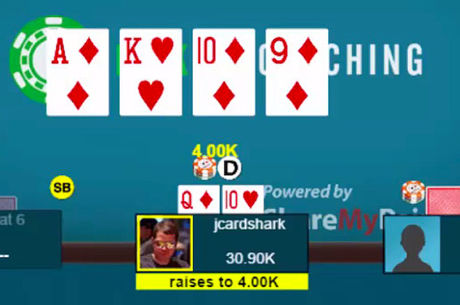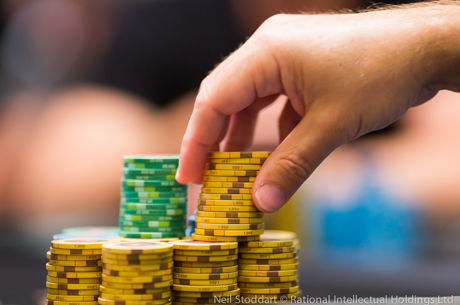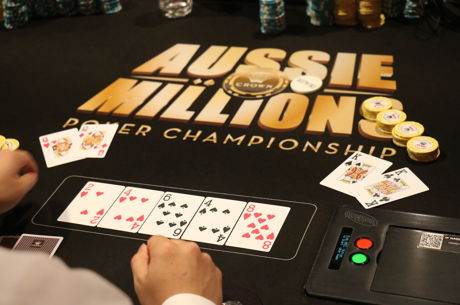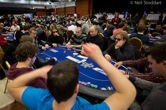Donkey Poker: Do You Play Too Many Hands?
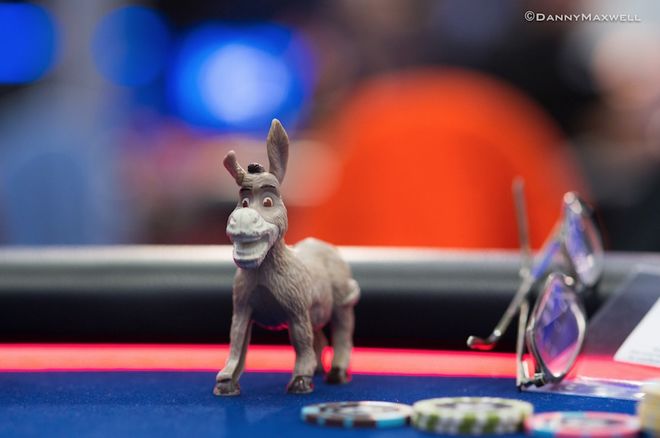
My previous article, "Low Stakes Live Games Differ From Online," pointed out that live, low-stakes no-limit hold'em games — what I call "Donkey Games" — play much differently than much tougher online games.
One key statistic showing that difference is VPIP percentage, which refers to how often players Voluntarily Put money In the Pot. This is simply a measure of how loose a player is.
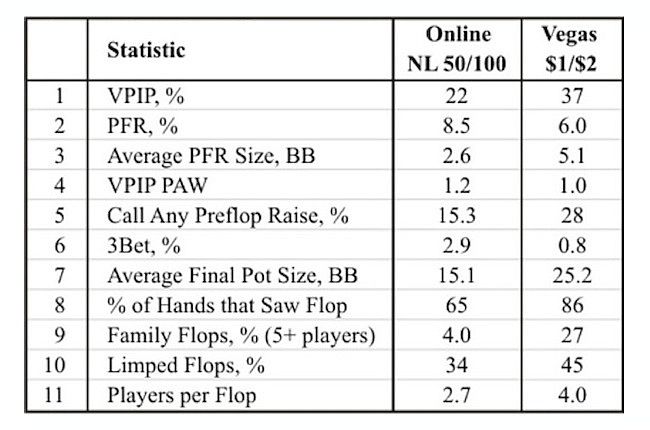
We see from Figure 1 (Row 1) that the average Vegas $1/$2 player has a VPIP of 37 percent, which is nearly 70 percent looser than the average online NL100 player who has a VPIP of just 22 percent. Clearly online poker games play a lot tighter. But just how many hands should we be playing?
Online VPIP
In my first book, The Statistics of Poker, I analyzed about 6 million hand histories for online NL50 and NL100. Figure 2 below is a plot of the average online Win Rate for online players with various VPIP percentages.
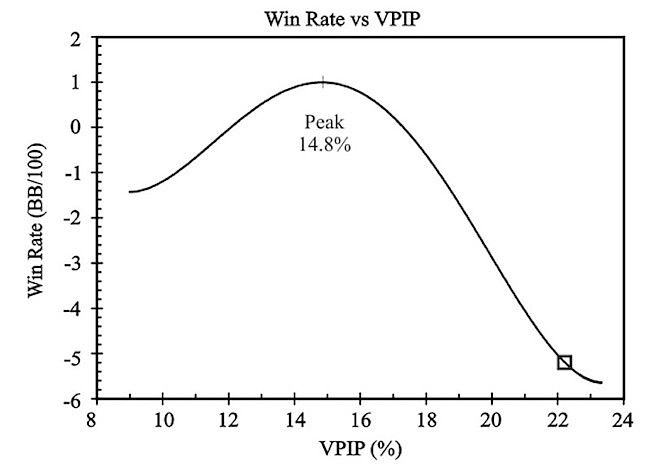
This shows that the "peak" player wins about 1 BB per hundred hands by playing about 15 percent of his hands. Notice that the "average" online player loses about 5 BB/100 by playing 22 percent of his hands (the square symbol). What this plot tells us is that the average 15 percent VPIP player is a modest winner, but the average 22 percent VPIP player is a big loser. Notice also that playing "too tight" is not nearly as damaging to our Win Rate as playing "too loose."
However, this curve does not necessarily say that 15 percent VPIP is "optimum." The average 15 percent player is actually mixture of strong and weak players, so the strongest 15 percent VPIP players will win more than 1 BB/100. In fact, it seems plausible that the best players can get away with playing a few more hands than 15 percent. I have analyzed the raw data in many different ways and have concluded that the optimum online VPIP is 15-16 percent.
Live VPIP
Producing a curve like Figure 2 for live play is practically impossible. However, we can get fairly reliable average VPIP values for live games by recording just a few hundred live hand histories. I have done this for four Vegas card rooms, finding that the average Vegas VPIP is about 37 percent.
Though some tables are tighter than others, VPIP changes very little between the Strip and off-Strip rooms. It may be slightly tighter during the morning and somewhat looser on weekends, but the variation is not generally dramatic. Even Vegas $2/$5 games are similarly loose.
So Vegas low-stakes NLH games are much looser than online games. How should we expect this to affect the optimal VPIP of a Vegas game?
The extra looseness of Vegas low-stakes NLH is not the only factor to consider. Since there are more players per pot in the Vegas game, and since Vegas players are much worse than online players, the average pot size is larger (see Figure 1, Row 7). That implies we should be able to play more hands in the Vegas game, especially when we have position.
But we shouldn't go crazy here. We can't maximize our Vegas profit by playing as many hands as our opponents do. But if we are skillful postflop, and if we add our "extra" hands in late position, we should be able to increase our "optimal" VPIP to around 20 percent.
We will never know (based on data) what this optimum really is, but 20 percent is a reasonable initial target for an average Donkey Game. If the game is tighter than normal, with fewer players limping and with smaller pots, playing a bit tighter is usually a good adjustment. For extremely loose and passive games, we can usually play a bit looser.
The final factor in how loose to play is the quality of your own postflop play. If you are only a slight winning player at 20 percent VPIP, you should consider playing a bit tighter. Once you fix your major postflop leaks, you can consider adding additional marginal hands, especially in late position.
Position
The previous discussion only considered average VPIP, ignoring the critical importance of position (this will be the topic of my next article). Nevertheless, if you play live low-stakes no-limit hold'em, you are probably too loose.
You can estimate your live VPIP in a fairly straight-forward way — just count your VPIP hands for a few sessions. If your card room deals about 35 hands per hour, you can get a reasonable convergence in just 5 or 10 hours.
If you are somewhere near 20 percent, you are in the right ballpark. But if you are playing 30 percent, 40 percent, or even more of your hands, you should begin thinking about how to fix this leak.
Also in this series...
- Low-Stakes Live Games Differ from Online
- Are You a Position-Dummy?
- When Can I Take a Bathroom Break?
- Is Straddling a Good or Bad Play?
- A Preflop Question: Is Limping Lame?
- Maximizing Expectation When Betting For Value
- Maximizing Expectation When Betting as a Bluff
- Five Weak Reasons to Bet (and One Weak Reason Not To)
- Do You Have 'Jack-O-Phobia'? Playing Pocket Jacks in Live NL Hold'em
Steve Selbrede has been playing poker for 20 years and writing about it since 2012. He is the author of five books, The Statistics of Poker, Beat the Donks, Donkey Poker Volume 1: Preflop, Donkey Poker Volume 2: Postflop, and Donkey Poker Volume 3: Hand Reading.
In this Series
- 1 Donkey Poker: Low-Stakes Live Games Differ from Online
- 2 Donkey Poker: Do You Play Too Many Hands?
- 3 Donkey Poker: Are You a Position-Dummy?
- 4 Donkey Poker: When Can I Take a Bathroom Break?
- 5 Is Straddling a Good or Bad Play?
- 6 A Preflop Question: Is Limping Lame?
- 7 Maximizing Expectation When Betting For Value
- 8 Maximizing Expectation When Betting as a Bluff
- 9 Five Weak Reasons to Bet (and One Weak Reason Not To)
- 10 Do You Have 'Jack-O-Phobia'? Playing Pocket Jacks in Live NL Hold'em
- 11 Donk Betting in Small-Stakes Live No-Limit Hold'em

